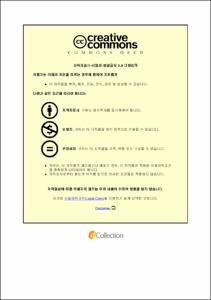2유체 미립화기의 분사 형태와 공급 기체 종류가 액체 풀화재 소화에 미치는 영향에 대한 실험적 연구
- Abstract
- In the present experimental study, the effects of spray pattern and supply gas type for twin-fluid atomizer on liquid pool fire extinguishment were investigated. To examine the effects of spray pattern and supply gas type, two kinds of twin-fluid atomizers (i.e., full cone and hollow cone) and supply gas (i.e., air or nitrogen) were applied, respectively.
Spray characteristics (i.e., supply pressure, droplet size, and air velocity distribution) were measured under various air and water flow rates with no fire condition. Then, the experiments of liquid pool fire extinguishment were performed in a closed chamber of 1 m × 1 m × 1 m in dimension. As fire source, n-Heptane was used as fuel using different circular fuel pan diameters of 80 mm and 120 mm, and their heat release rates were measured to be 1.17 kW and 5.23 kW, respectively. To examine the fire extinguishing mechanisms for water mist, the axial temperature above fuel surface, temperature distribution in liquid pool, oxygen concentration in chamber, and fire extinguishing time were measured with visualizations of fire plumes.
For full cone twin-fluid atomizer, fire suppression phenomena was observed and flare-up occurred in the range of increase in the axial temperature above fuel surface. In addition, two types of full cone twin-fluid atomizers with different sizes of liquid and gas outlet were compared. As a result, under the water flow rate conditions less than 40 g/min, the maximum fuel surface temperature and minimum oxygen concentration of small outlet sized atomizer were lower and higher than large one, respectively.
For hollow cone twin-fluid atomizer, fire suppression phenomena was not observed for the similar water and air flow rate conditions to full cone twin-fluid atomizer. When the water mist was discharged with air, the maximum fuel surface temperature and minimum oxygen concentration were decreased and increased, respectively, with increasing water flow rate.
For effect of spray pattern under different heat release rates, the effect of spray pattern on maximum fuel surface temperature, minimum oxygen concentration, and fire extinguishing time was reduced with increasing water flow rate. On the other hand, for full cone twin-fluid atomizer, the effect of supply gas type on fire extinguishing time was reduced as the water flow rate increased. For hollow cone twin-fluid atomizer, the effect of supply gas type on fire extinguishing time was decreased as the water flow rate increased under the heat release rate of 1.17 kW. However, at the gas flow rate of 30 L/min, the effect of supply gas type on fire extinguishing time was important despite of water flow rate under the heat release rate of 5.23 kW. When gas flow rate conditions more than 30 L/min, the effect of supply gas type on fire extinguishing time was reduced as the water flow rate increased under the heat release rate of 5.23 kW.
- Issued Date
- 2020
- Awarded Date
- 2020. 2
- Type
- Dissertation
- Publisher
- 부경대학교
- Affiliation
- 부경대학교 대학원
- Department
- 대학원 소방공학과
- Advisor
- 이치영
- Table Of Contents
- 제 1 장 서 론 1
1.1 연구 배경 1
1.2 미분무의 화재 소화 원리 7
1.3 기존 연구 동향 10
1.4 연구 목표 및 내용 14
제 2 장 실험 장치 및 방법 15
2.1 2유체 미립화기 15
2.2 비화재 조건에서의 분사 특성 19
2.2.1 공급 압력 23
2.2.2 액적 크기 25
2.2.3 분사 속도 분포 27
2.3 화재 소화 실험 장치 29
2.4 실험 조건 및 방법 35
제 3 장 실험 결과 및 고찰 36
3.1 비화재 조건에서의 분사 특성 36
3.1.1 공급 압력 36
3.1.2 액적 크기 39
3.1.3 분사 속도 분포 42
3.2 중실원추형 2유체 미립화기 화재 소화 실험 53
3.2.1 연료면 위 축방향 온도 분포 53
3.2.2 액체 풀 내 온도 분포 64
3.2.3 공간 내 산소 농도 69
3.2.4 물 및 기체 분사 면적에 따른 비교 및 검토 75
3.3 중공원추형 2유체 미립화기 화재 소화 실험 78
3.3.1 연료면 위 축방향 온도 분포 78
3.3.2 액체 풀 내 온도 분포 88
3.3.3 공간 내 산소 농도 93
3.4 열방출률에 따른 분사 형태와 공급 기체 종류 영향 98
제 4 장 결 론 126
참 고 문 헌 129
- Degree
- Master
- Files in This Item:
-
-
Download
 2유체 미립화기의 분사 형태와 공급 기체 종류가 액체 풀화재 소화에 미치는 영향에 대한 실험적 연구.pdf
기타 데이터 / 9.17 MB / Adobe PDF
2유체 미립화기의 분사 형태와 공급 기체 종류가 액체 풀화재 소화에 미치는 영향에 대한 실험적 연구.pdf
기타 데이터 / 9.17 MB / Adobe PDF
-
Items in Repository are protected by copyright, with all rights reserved, unless otherwise indicated.